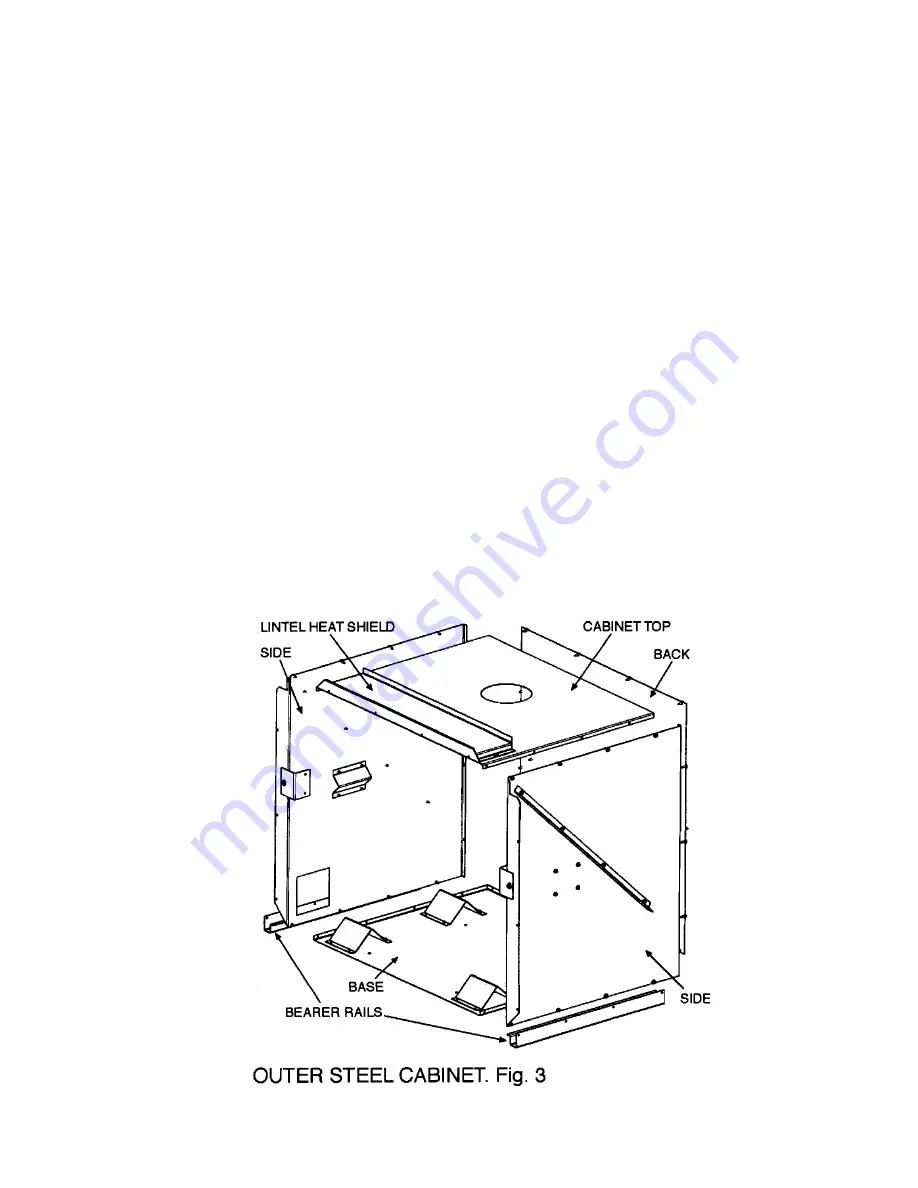
Page 4
3.
Frame up the enclosure as shown in Fig. 1. The frame should provide a recess 710mm wide and at least
580mm deep (measured from the face of the cladding material or from any tiles etc. that may be fixed to the
cladding material). The overall width of the frame must be not less than 1040mm to accommodate the fascia
width and to ensure a safe clearance to any combustible material should there be a room side-wall abutting
the enclosure. The opening must have two timber uprights spaced 710mm (between) at the front. The bearer
rails on the base of the outer steel cabinet will sit directly on the floor. No insulation is needed on top of the floor
in the recess. (See Figs. 1 & 2).
4.
The floor in front of the heater will not require a hearth or any other heat protection, although a hearth (floor
protector) may be provided, if desired, purely for aesthetic reasons.
5.
The usual three nogs may be fixed at each side of the enclosure. At the front the lowest nog must have its
lower face 735mm above the floor. Further nogs can be fitted anywhere above this one.
6.
Fix the cladding to the sides and front of the framed-up enclosure. Conventional paper-faced wall cladding will
be satisfactory on all faces of the enclosure, although a more appropriate material (such as Tile and Slate
underlay) may be preferable where tiles etc. are to be fitted.
7.
If a decorative finish (such as tiles or slate) is to be applied to the face of the enclosure, this should be done
next. The decorative finish must extend down to the top of the recess but may stop short of the sides of the
recess provided that packing is provided between the uprights of the enclosure and the flanges of the outer
steel cabinet to bring the flanges in line with the outer surface of the decorative finish.
8.
If a mantelshelf is being fitted, it must extend no more than 200 mm, and its undersurface must be at least
1060mm above the floor or at least 305mm above the top of the fascia if the base of the heater is raised above
floor level. For raised installations, see Step 2. Please note that the mantelshelf details in the standard manual
are NOT valid for zero clearance installations.
9.
Penetrate the roofing material on the flue centreline, following the instructions accompanying the special Zero
Clearance Flue Kit.
10.
IMPORTANT. Cover the entire open space surrounding the flue heat shield (at ceiling level) with wire
netting with a mesh small enough to prevent the entry of birds or vermin. This will avoid the risk of a
fire from nesting inside the enclosure.





































